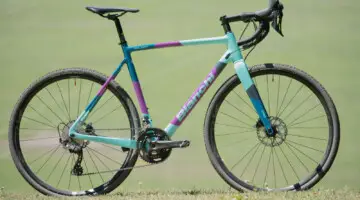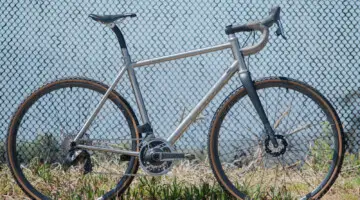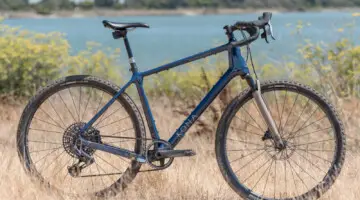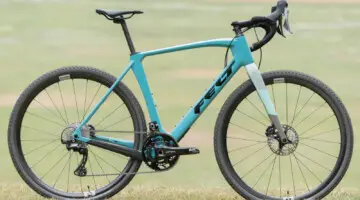Things have been a little quiet at Cyclocross Magazine recently, partially due to the cyclocross offseason and a staff concussion, but we are still working in the background on some upcoming product reviews. Here are a few items that we’re riding.
Cyclocross Specific Race bike
We have a Sage Titanium PDXCX to review. Sage Titanium owner David Rosen is loaning his personal race bike from last season. We saw his new bike has a few detail changes at the Sea Otter Classic 2025. He says the geometry is exactly the same between his old and new bike, and his top-end SRAM Red 2X build is also nearly identical.
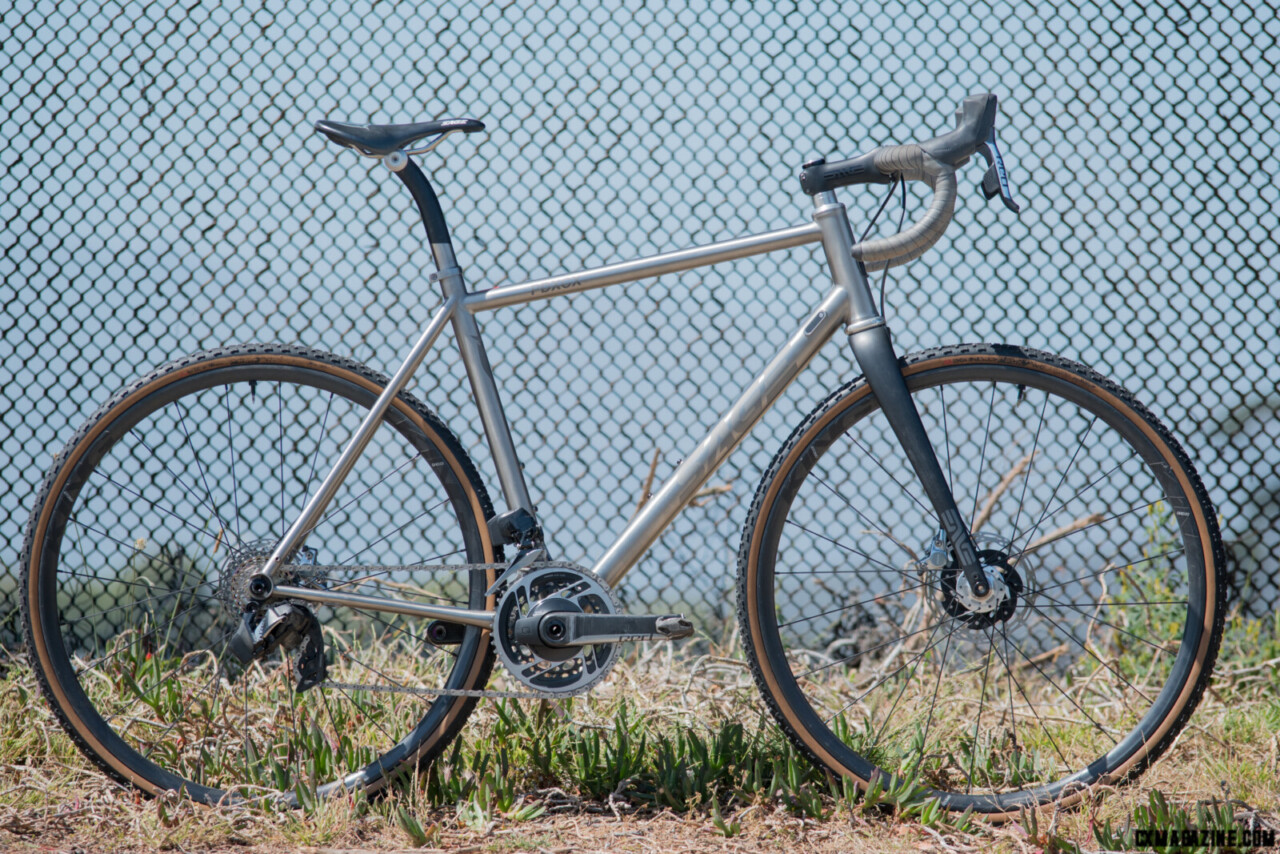
Sage Titanium PDXCX. ©C. Lee/Cyclocross Magazine
We rode a Sage Titanium PDXCX in 2o18 and a Sage Titanium Barlow in 2019. There are very few companies in the US producing cyclocross-specific bicycles these days and Sage Titanium is one of them. How does it differ from a “gravel bike?” David Rosen told me, “You don’t ride a ‘cross bike, you race a ‘cross bike!”
Our review bike weighs 18.5 pounds and is pictured above. It takes off like a rocket from the line and drops into corners telepathically. A detailed review is in progress as you read this. Yes, it interestingly has a 2x SRAM drivetrain, a rarity in cyclocross these days, but should you purchase your own from Sage, you can get the drivetrain of your dreams.
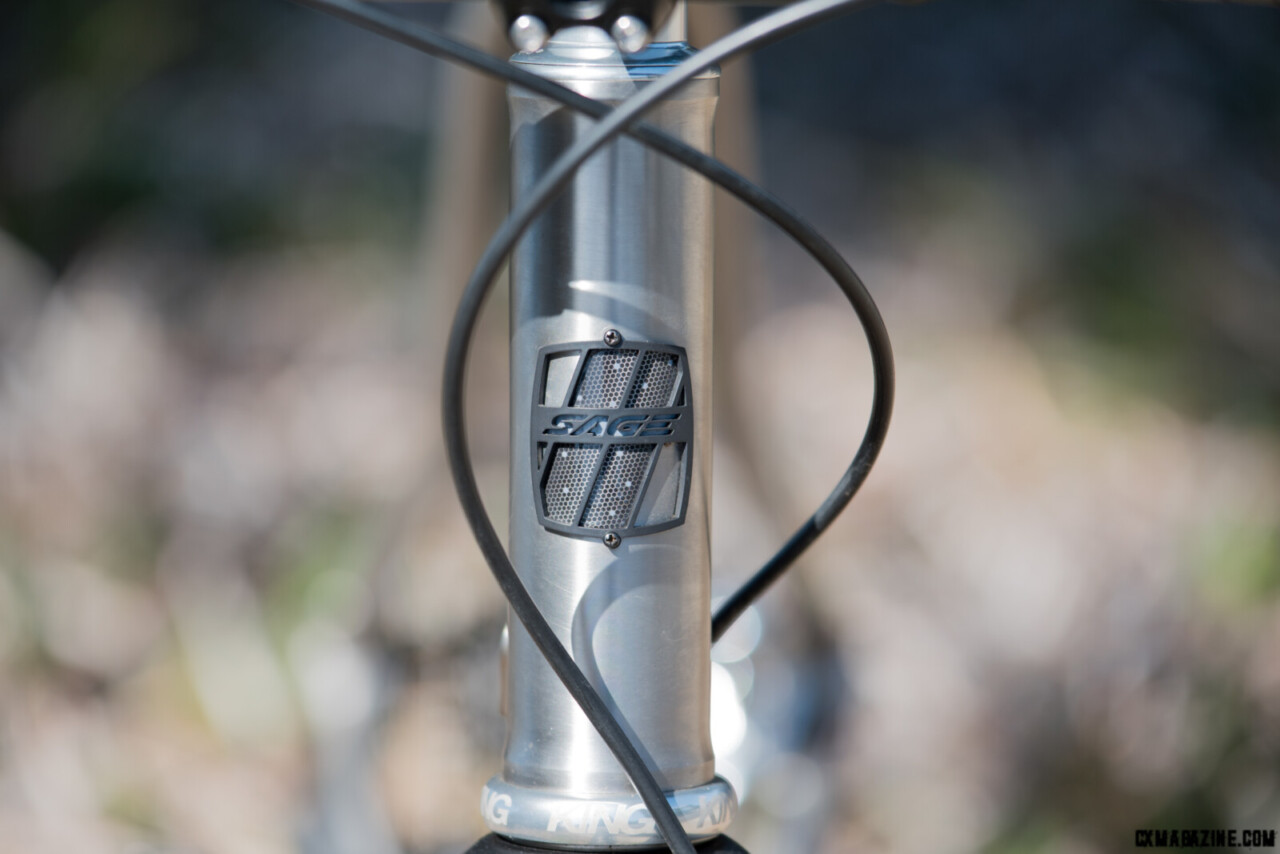
The Sage headbadge doesn’t help reduce your CDa, but it sure adds panache. ©C. Lee/Cyclocross Magazine
Another Kona?
After our popular review of the front suspension-equipped Kona Ouroboros last year, a discussion with the company lamenting the loss of the Jake family of cyclocross bikes led to them sending a new Libre for review—with the company saying it’s their most cyclocross-able rig. We’re putting that to the test, with the understanding that most of us race cyclocross, but also ride plenty of mixed terrain when not battling between the tape.
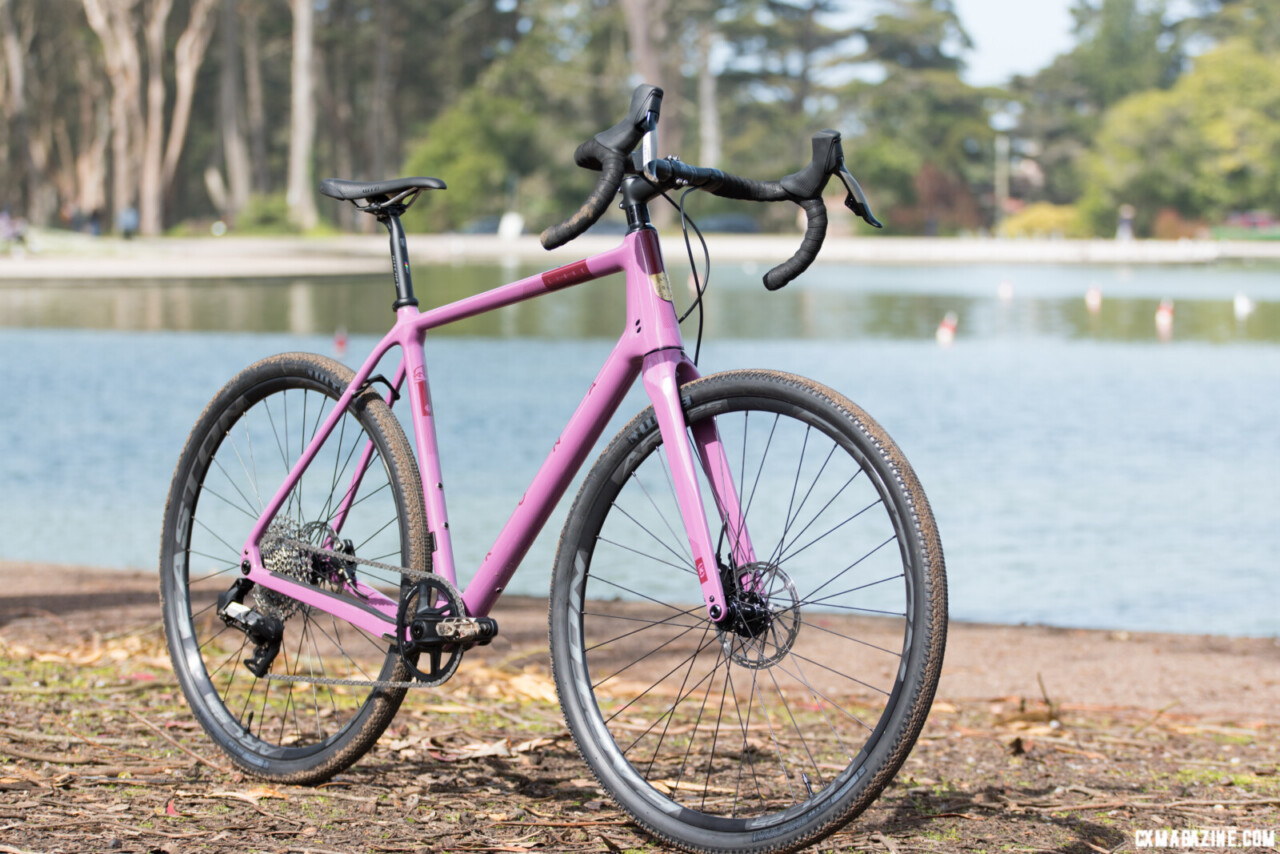
Kona Libre CR, a new model for 2025. ©C. Lee/Cyclocross Magazine
The Libre CR is new for 2025. We reviewed a Libre DL 7 years ago, and a year later, Barry Wicks took third place on a Kona Libre DL at the Lost and Found Gravel race. Wicks, along with Ryan Trebon, is one of the Kona Cyclocross “Twin Towers” who ruled US domestic cyclocross in the mid-2000s.
The new Kona Libre CR is a complete redesign with a carbon frameset, and is equipped with SRAM Rival eTap AXS. An aluminum version is available with a slightly different geometry. It comes with 45mm tires, with room for more. Our detailed review is due out in a few weeks or so as we use it to compete in some local gravel events and even a summer cyclocross series.
Clik Valve
We have been using the Clik Valve and have some opinions. The Clik Valve, licensed to Schwalbe, is a replacement for the Presta valve core. It offers an easier, more secure fitting for tire inflation with only the exchange of the Presta valve core, and the promise of higher flow rates, better durability and less sealant contamination. Those all sound good, right?
Is that just a lot of hot air? No, but what’s the catch? The cost of course, with a valve kit and chuck starts at about $42. Also compatibility, which is admittedly a bit confusing. Schwalbe recommends the special air chuck to take advantage of the Clik Valve features. The chuck snaps onto the top of the valve, creating an airtight seal, and depresses the valve pin to allow air flow. In practice, installation and use are as advertised. It is indeed arguably easier to attach and remove the chuck without air loss. However, we have to ask, “Was that a big problem with Presta?” For some people it was, and we cannot fault anyone for inventing a better mousetrap.
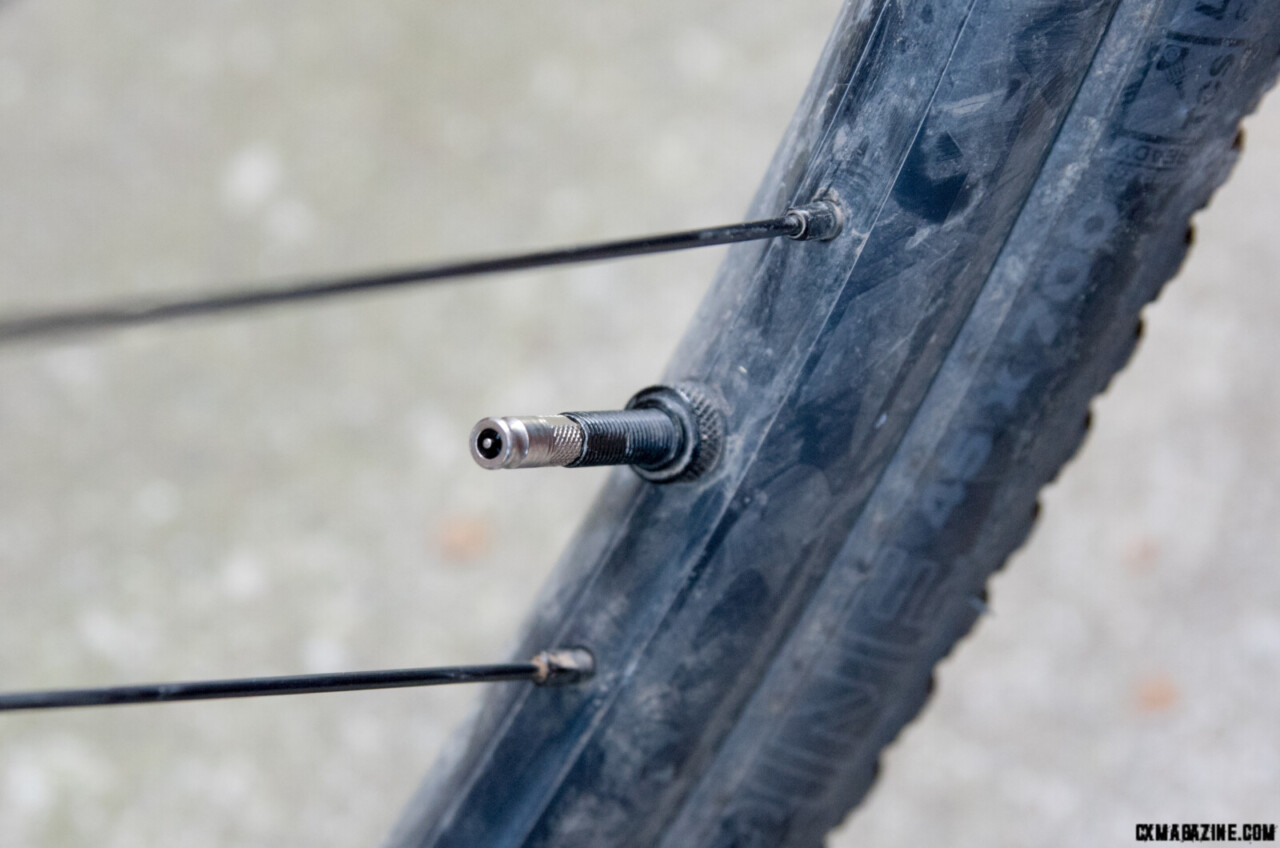
The Clik valve replaces the Presta valve core. Notice the small pin in the middle. ©C. Lee/Cyclocross Magazine
The Click Valve recommends a new air chuck for your pump. That is, not just your floor pump at home, but your field inflation tools, whether it be a hand pump, CO2 cartridge, or electric inflator. If you have more than one bike you will need a kit for each bike. Schwalbe says you can use a standard Presta pump, with reduced efficiency, and the Clik Valve pump is supposed to work on Presta valves as well. The former is true in our tests, but not with a threaded presta fitting such as the Lezyne pump. Lezyne embraces the Clik Valve with a new pump lineup. Using the Clik Valve chuck for standard presta valves is not possible in our experience.
Other companies like Wolf Tooth have followed the bait and hooked onto Schwalbe’s design, offering $36.95 tubeless valves. Its product messaging is a little confusing, however, stating:
“Tubeless Valve Stem Kits for Schwalbe Clik Valve are compatible with Schwalbe Clik Valve pump heads ONLY. For the best experience, pair with a Clik-compatible pump. In a pinch, a Presta pump head can inflate Tubeless valves for Schwalbe Clik Valve, but it is not recommended for daily use.”
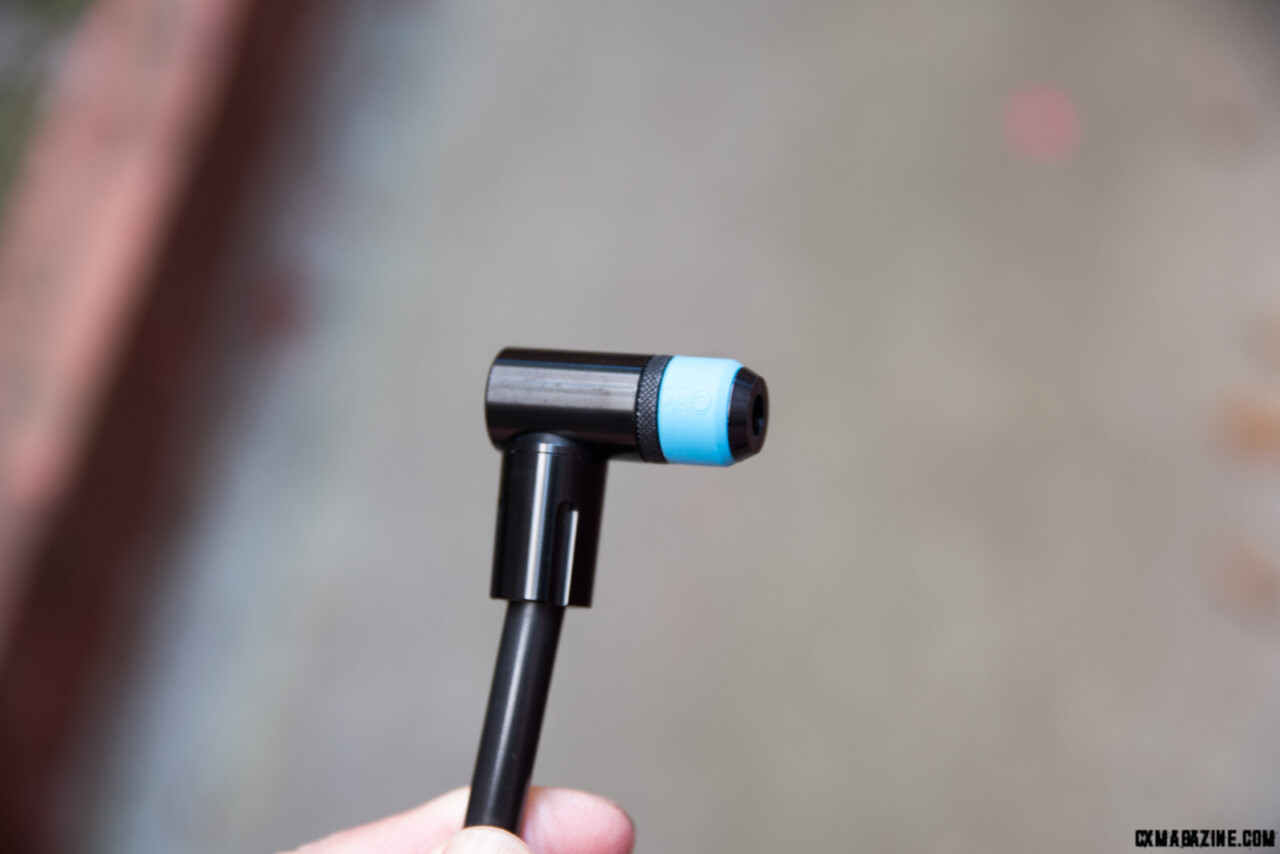
The Clik Valve air chuck. The front portion unthreads to act as an adapter for a Schrader valve pump. ©C. Lee/Cyclocross Magazine
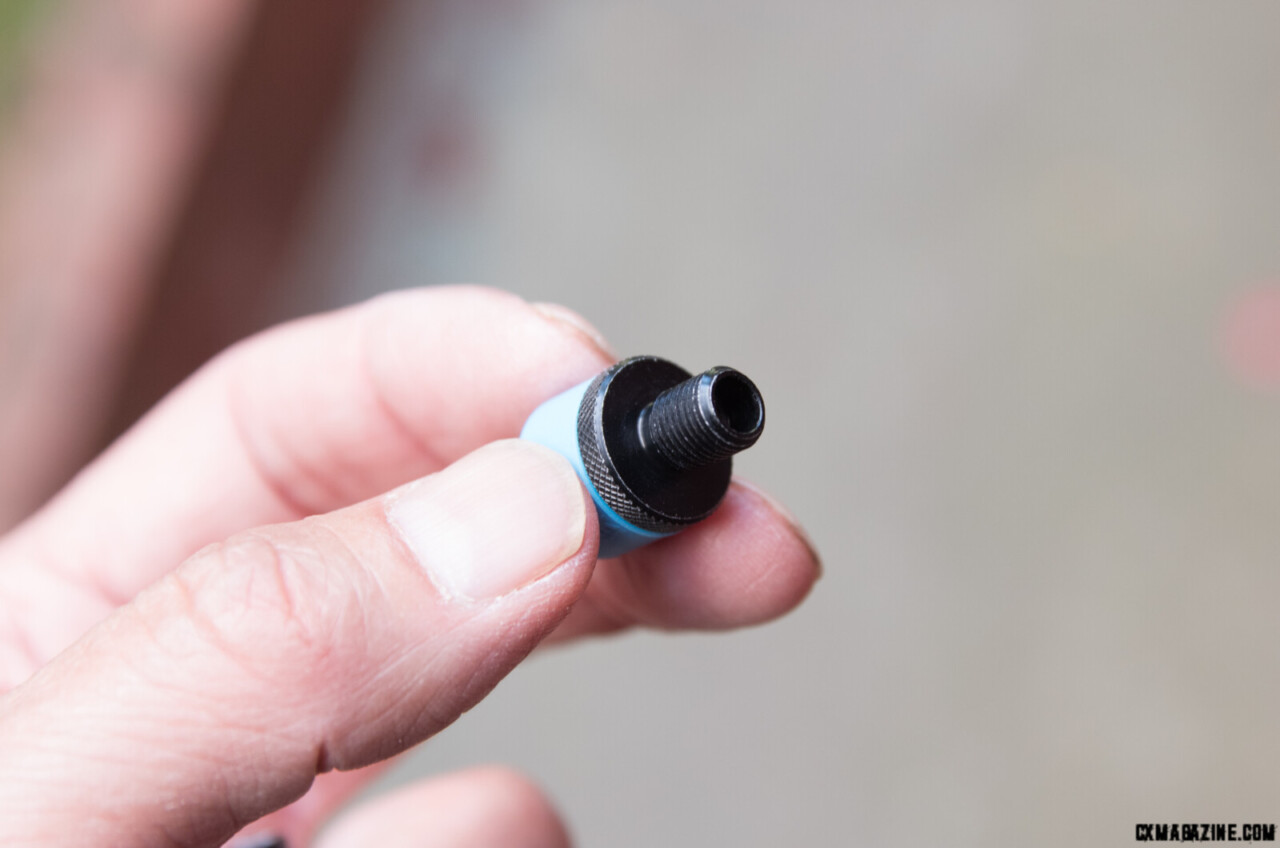
The threads on the backside of the air chuck head are the same as a Schrader valve, so you can use it as an adaptor. ©C. Lee/Cyclocross Magazine
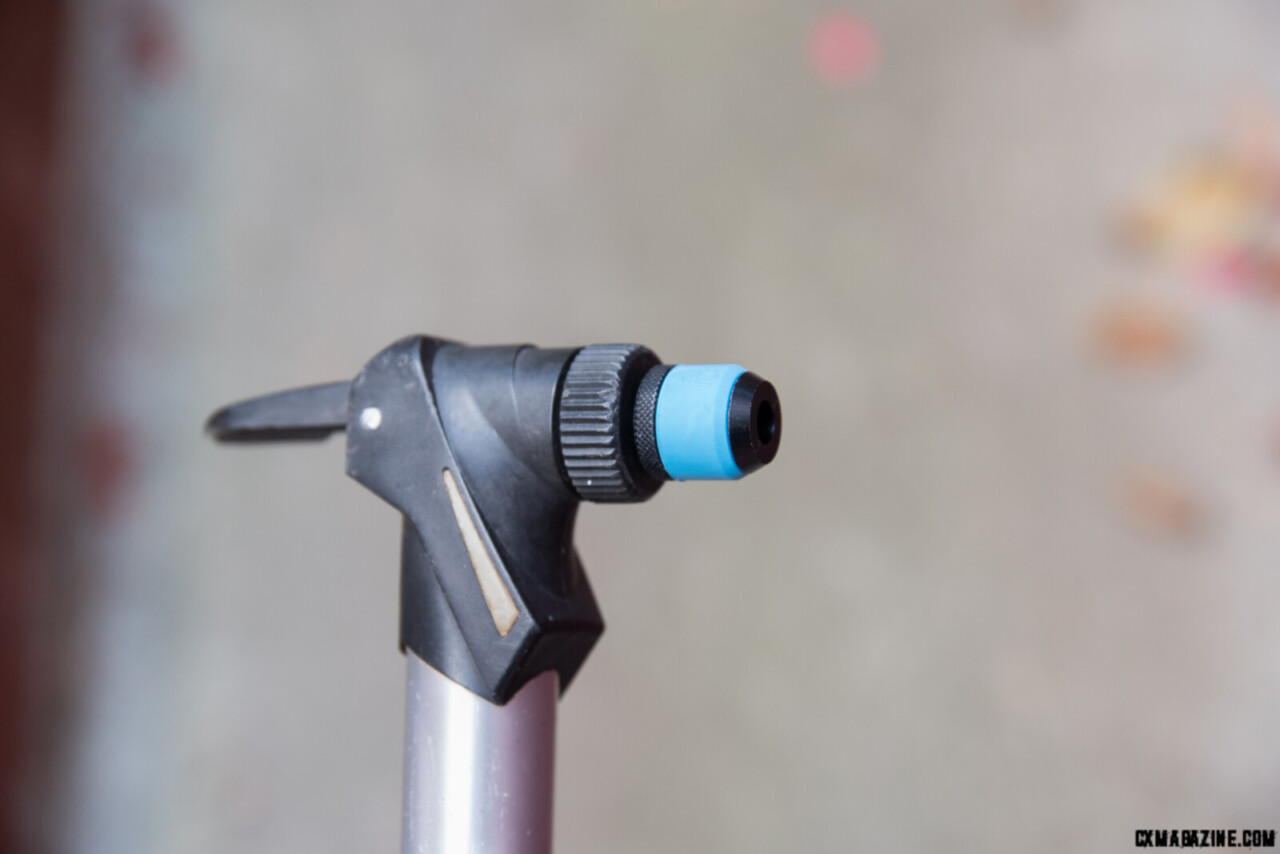
A Clik Valve air chuck adapted to the Schrader end of a standard pump. ©C. Lee/Cyclocross Magazine
It is also hard to measure air pressure if you do not rely on the gauge on your floor pump. I could not find a Schrader gauge that would thread on the adaptor, so you are left with buying the Clik Valve gauges. Reviews regarding the reliability of these gauges vary, so you may as well use your pump gauge. Bleeding air from the click valve is also not as easy compared to a standard presta valve because it is more difficult to depress the recessed valve pin. Of course this is not a problem is you have a Clik Valve compatible air gauge with a bleed valve.
The Clik Valve is in some ways like a mini Schrader valve with a snap-on chuck.
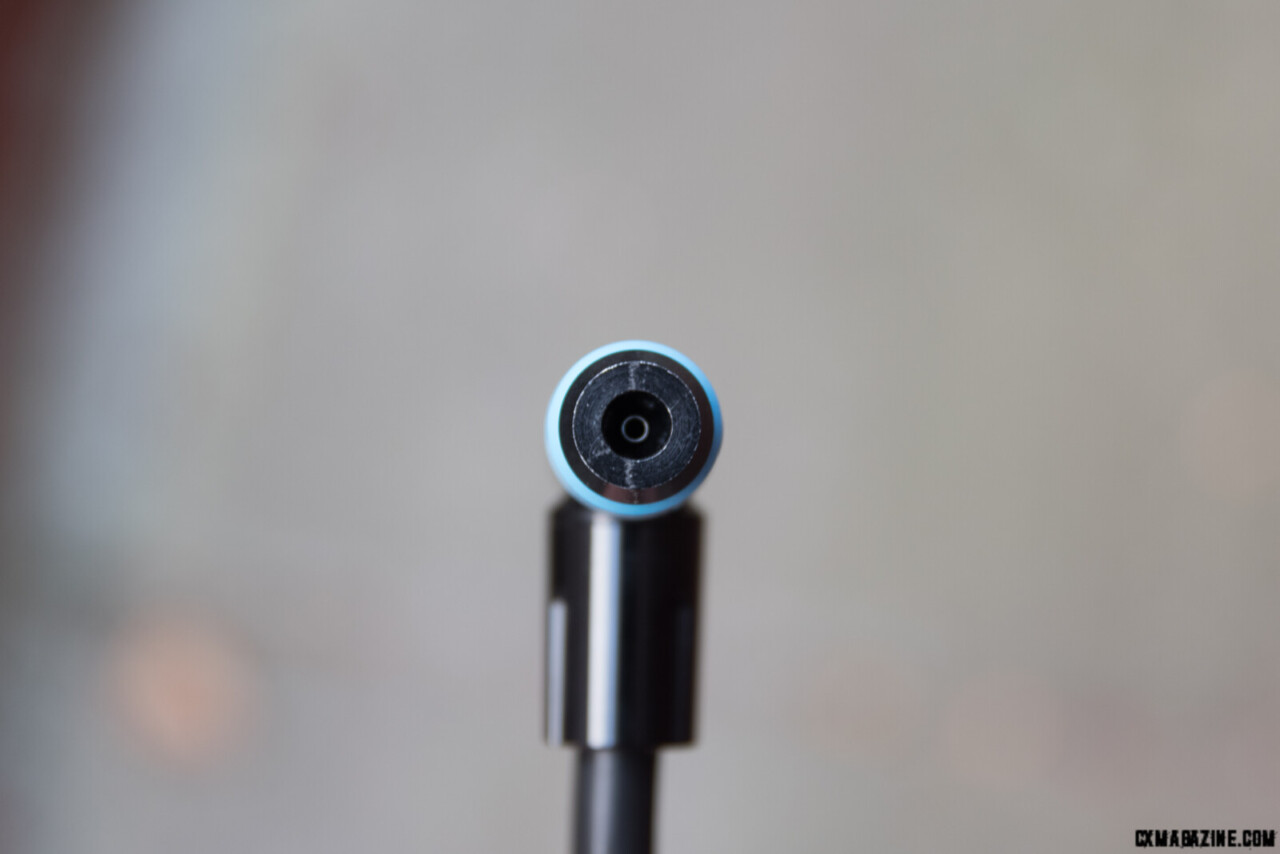
The Clik Valve air chuck has a pin that depresses the corresponding pin on the valve.
Stay posted as we see how these valves hold up over time.
More info: clickvalve.com
Cyclocross Magazine Heads to Flanders!
Cyclocross Magazine is going to Flanders to coincide with the re-opening of two iconic cycling routes in this northern area of Belgium. These routes form part of Flanders’ celebrated cycling heritage and have been carefully re-imagined by two of Belgium’s most iconic cyclists: the legendary Eddy Merckx, and cyclocross racing star Sven Nys.
We will get to ride and experience the new cycling routes. The Eddy Merckx route is 150km (93 miles) with 1000 meters (3300 feet) of climbing. This is almost double the distance of the previous Eddy Merckx route. The Sven Nys route is 75km (46.6 miles) with 790 meters (2600 feet) of climbing.
We’ll also have the opportunity to visit the Sven Nys Cycling Center where the GP Sven Nys X2O Trofee Baal course is. Though it is not cyclocross season, we’ll have the opportunity to ride the course. Keep an eye on our Instagram for updates!

